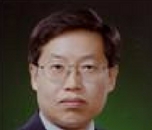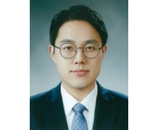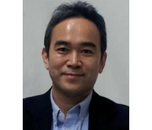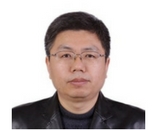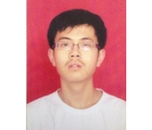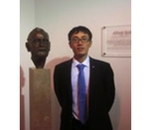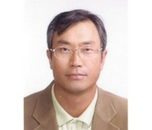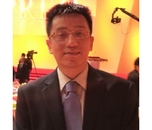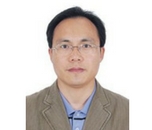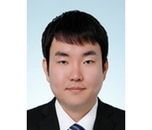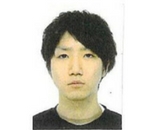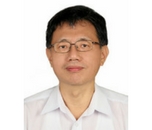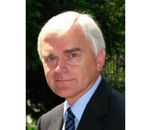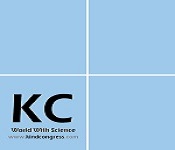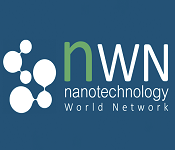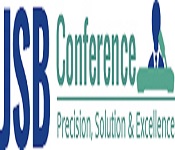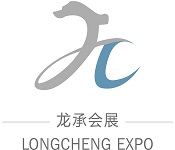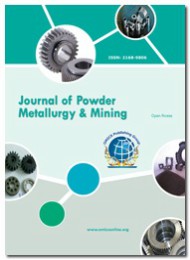Theme: “Unveiling the current Frontier’s in Field of Advanced Materials and Nanotechnologyâ€
MatNano 2018
ME Conferences is proud to announce the 20th International Conference on Advanced Materials Science and Nanotechnology, which is to be held during August 27-29, 2018 at Dubai, UAE.
On this great gathering, Organizing Committee invites participants from all over the globe to take part in this annual conference with the theme “Unveiling the current Frontier’s in Field of Advanced Materials and Nanotechnology ”. Advanced Materials Congress 2018 aims at sharing new ideas and new technologies amongst the professionals, industrialists and students from research areas of Advanced Materials and Nanotechnology to share their recent innovations and applications and indulge in interactive discussions and technical sessions at the event. The Conference will also have a space for companies and/or institutions to present their services, products, innovations and research results.
Advanced Materials Congress 2018 and Nanotechnology involves the tracks like Advanced Materials and Functional Devices, Engineering Materials, Composite Materials, Magnetism & Multiferroism, Optical materials and plasmonics, Energy and Harvesting Materials, Nanotechnology-Basics to applications, Nanopore science, Nanomedicine, Bio Nanotechnologies, Carbon nanostructures and graphene, Spintronics, Nanoparticle synthesis and applications.
Importance and Scope:
Advanced Materials plays a vital role in our lives because of its uniqueness in properties and extended application in various industries. These are the basis of modern science and technology. Advanced Materials are at the heart of many technological developments that touch our lives and find applications such as electronic materials for communication and information technology, biomaterials for better health care, sensors for intelligent environment, energy materials for renewable energy and environment, light alloys for better transportation, materials for strategic applications and more.
Nanotechnology is science, engineering, and technology conducted at the nanoscale, which is about 1 to 100 nanometers. Nanotechnology is the study of application of extremely small things and can be used across all the other science fields, such as chemistry, biology, physics, materials science, and engineering. Today's scientists and engineers are finding a wide variety of ways to deliberately make materials at the Nanoscale to take advantage of their enhanced properties such as higher strength, lighter weight, increased control of light spectrum, and greater chemical reactivity than their larger-scale counterparts
Why to attend???
13th International Conference on Advanced Materials Congress 2018 and nanotechnology professionals providing a premier technical forum for reporting and learning about the latest new generation technologies developed during the course of time along with discussing their applications. Events include hot topics presentations from all over the world and professional networking with industries, leading working groups and panels.
Meet Your Objective Business sector With individuals from and around the globe concentrated on finding out about Polymer science and Engineering, this is the best chance to achieve the biggest collection of members from everywhere throughout the World. Conduct shows, disperse data, meet with current, make a sprinkle with another product offering, and get name acknowledgment at this occasion. Widely acclaimed speakers, the latest methods, strategies, and the most up to date overhauls in Polymer science and Engineering are signs of this meeting.
Target Audience:
- Scientists.
- Professors.
- Research Scholars and students
- Nanotechnology Companies
- Nanotechnology Associations
- Advanced Materials and Nanotechnology Engineers
Track 1 Advanced Materials Engineering
Materials Science and Engineering is an acclaimed scientific discipline, expanding in recent decades to surround polymers, ceramics, glass, composite materials and biomaterials. Materials science and engineering, involves the discovery and design of new materials. Many of the most pressing scientific problems humans currently face are due to the limitations of the materials that are available and, as a result, major breakthroughs in materials science are likely to affect the future of technology significantly. Materials scientists lay stress on understanding how the history of a material influences its structure, and thus its properties and performance. All engineered products from airplanes to musical instruments, alternative energy sources related to ecologically-friendly manufacturing processes, medical devices to artificial tissues, computer chips to data storage devices and many more are made from materials. In fact, all new and altered materials are often at the heart of product innovation in highly diverse applications. The global market is projected to reach $6,000 million by 2020 and lodge a CAGR of 10.2% between 2015 and 2020 in terms of worth. The North American region remains the largest market, accompanied by Asia-Pacific. The Europe market is estimated to be growth at a steady rate due to economic redeem in the region along with the expanding concern for the building insulation and energy savings. Functional Devices has established itself as a leader in the HVAC, Building Controls, Energy Management, and Energy.
Track 2 Advanced Bio-Materials & Bio-devices
Biomaterials from healthcare viewpoint can be defined as materials those possess some novel properties that make them appropriate to come in immediate association with the living tissue without eliciting any adverse immune rejection reactions. Biomaterials are in the service of mankind through ancient times but subsequent evolution has made them more versatile and has increased their usage. Biomaterials have transformed the areas like bioengineering and tissue engineering for the development of strategies to counter life threatening diseases. These concepts and technologies are being used for the treatment of different diseases like cardiac failure, fractures, deep skin injuries, etc. Research is being performed to improve the existing methods and for the innovation of new approaches. With the current progress in biomaterials we can expect a future healthcare which will be economically feasible to us. Equipment and consumables was worth US$ 47.7 billion in 2014 and is further expected to reach US$ 55.5 billion in 2020 with a CAGR (2015 to 2020) of 3%. The dental equipment is the fastest growing market due to continuous technological innovations. The overall market is driven by increasing demand for professional dental services and growing consumer awareness. The major players in the Global Dental market are 3M ESPE, Danaher Corporation, Biolase Inc., Carestream Health Inc., GC Corporation, Straumann, Patterson Companies Inc., Sirona Dental Systems Inc., Planmeca Oy, DENTSPLY International Inc. A-Dec Inc. 3
Track 3 Advanced Ceramics and Composite Materials
The primeval ceramics made by humans were pottery objects, including 27,000-year-old figurines, made from clay, either by itself or blended with other materials like silica, hardened, sintered, in fire. Later ceramics were glazed and fired to produce smooth, colored surfaces, decreasing porosity through the use of glassy, amorphous ceramic coatings on top of the crystalline ceramic substrates. Ceramics currently include domestic, industrial and building products, as well as a broad range of ceramic art. In the 20th century, new ceramic materials were developed for use in advanced ceramic engineering, such as in semiconductors. Polymers are investigated in the fields of biophysics and macromolecular science, and polymer science (which encompass polymer chemistry and polymer physics). Historically, products arising from the linkage of repeating units by covalent chemical bonds have been the primary focus of polymer science; emerging important areas of the science currently focus on non-covalent links. Composite materials are generally used for buildings, bridges and structures like boat hulls, swimming pool panels, race car bodies, shower stalls, bathtubs, storage tanks, imitation granite and cultured marble sinks and counter tops. The most advanced examples perform routinely on spacecraft in demanding environments. Now standing at USD 296.2 billion, the ceramics market is forecast to grow to USD 502.8 billion by 2020, as every industry achieves upgraded manufacturing efficiency along with high renewable energy efficiency. As per the global market analysis, in 2014, the Composite materials industry is expected to generate revenue of approximately 156.12 billion U.S. dollars.
Track 4 Advanced Optical and Magnetic Materials
For any electronic device to operate well, electrical current must be efficiently controlled by switching devices, which becomes challenging as systems approach very small dimensions. This problem must be addressed by synthesizing materials that permit reliable turn-on and turn-off of current at any size scale. New electronic and photonic nanomaterials assure dramatic breakthroughs in communications, computing devices and solid-state lighting. Current research involves bulk crystal growth, organic semiconductors, thin film and nanostructure growth, and soft lithography. Several of the major photonics companies in the world views on different technologies and opinions about future challenges for manufacturers and integrators of lasers and photonics products. The silicon photonics market is anticipated to grow to $497.53 million by 2020, expanding at a CAGR of 27.74% from 2014 to 2020. The silicon carbide semiconductor market is estimated to grow $3182.89 Million by 2020, at an expected CAGR of 42.03% from 2014 to 2020.
Track 5 Optical Materials and Plasmonics
The Diligence of Optical Materials is to give a method for correspondence and innovation exchange among scientists who are mindful in materials for potential gadget applications. Plasmonics is the investigation of the collaboration between electromagnetic field and free electrons in a metal.
Track 6 Energy and Harvesting Materials
Different geophysical and social pressures are providing a shift from conventional fossil fuels to renewable and sustainable energy sources. We must create the materials that will support emergent energy technologies. Solar energy is a top priority of the department, and we are devoting extensive resources to developing photovoltaic cells that are both more efficient and less costly than current technology. We also have extensive research around next-generation battery technology. Materials performance lies at the heart of the development and optimization of green energy technologies and computational methods now plays a major role in modeling and predicting the properties of complex materials. The global market for super capacitor is expected to grow from $1.8 billion in 2014 to $2.0 billion in 2015 at a year-on-year (YOY) growth rate of 9.2%. In addition, the market is expected to grow at a five-year CAGR (2015 to 2020) of 19.1%, to reach $4.8 billion in 2020. The competition in the global super capacitor market is intense within a few large players, such as, AVX Corp., Axion Power International, Inc., Beijing HCC Energy Tech. Co., Ltd., CAP-XX, Elna Co. Ltd., Elton, Graphene Laboratories INC., Jianghai Capacitor Co., Ltd, Jiangsu Shuangdeng Group Co., Ltd., Jinzhou Kaimei Power Co., Ltd, KEMET, LS MTRON, Maxwell Technologies INC., Nesscap Energy Inc., Nippon Chemi-Con Corp., Panasonic Co., Ltd., Shanghai Aowei Technology Development Co., Ltd., Skeleton Technologies, Supreme Power Systems Co., Ltd., XG Sciences.
Track 7 Nanotechnology-Basics to Applications
Nanotechnology is the collaboration of the physics, chemistry, biology, computer and material sciences integrated with engineering entering the nanoscale. This means science and engineering focused on making the particles, things and devices at the atomic and molecular scale. The Study of the Controlling of Matter on a nuclear and sub-atomic scale. For the most part Nanotechnology Deals with Structures Sized between 1 to 100 Nanometer in no less than one Dimension, and includes creating or adjusting materials or gadgets inside that size.
Track 8 Nano Materials
Nanomaterials are foundations of nanoscience and nanotechnology. Nanostructure science and innovation is an expansive and interdisciplinary territory of innovative work movement that has been becoming violently worldwide in the previous couple of years. It has the potential for altering the courses in which materials and items are made and the range and nature of functionalities that can be gotten to.
Track 9 Nano Structures
Nanostructured Materials (NsM) are Advanced materials with a microstructure the trademark length size of which is on the request of a couple (commonly 1–10) nanometers. NsM might be in or far from thermodynamic harmony. Nanostructured Materials combined by supramolecular science are cases of Nanostructured Materials in thermodynamic harmony. Nanostructured Materials comprising of nanometer-sized crystallites (e.g. of Au or NaCl) with various crystallographic introductions or potentially synthetic creations are far from thermodynamic harmony.
Track 10 Physics and Chemistry of Materials
Materials Chemistry provides the loop between atomic, molecular and super molecular behavior and the useful properties of a material. It lies at the core of numerous chemical-using industries. This deals with the atomic nuclei of the materials, and how they are arranged to provide molecules, crystals, etc. Much of properties of electrical, magnetic particles and chemical materials evolve from this level of structure. The length scales involved are in angstroms. The way in which the atoms and molecules are bonded and organized is fundamental to studying the properties and behavior of any material. The forecast for R&D growth in the chemical and advanced materials industry indicates the improving global economy and the key markets the industry serves. U.S. R&D splurging in chemicals and advanced materials is forecast to grow by 3.6% to reach $12 billion in 2014. Overall global R&D is forecast to expand at a slightly higher 4.7% rate to $45 billion in 2014.
Track 11 Carbon Nanostructures and Graphene
Carbon is firmly associated with nearly all that we manage in a regular schedule. Because of its extraordinary properties, for example, high solidness at natural conditions, diverse hybridizations, solid covalent bond arrangement and simple of mixes development, carbon has been a point of logical enthusiasm for a few regions. A nanostructure is a structure of middle size amongst minute and atomic structures. Nanostructural detail is microstructure at nanoscale. Graphene is an allotrope of carbon as a two-dimensional, nuclear scale, hexagonal cross section in which one molecule shapes every vertex. It is the essential auxiliary component of different allotropes, including graphite, charcoal, carbon nanotubes and fullerenes. It can likewise be considered as an inconclusively substantial sweet-smelling atom, a definitive instance of the group of level polycyclic fragrant hydrocarbons.
Track 12 Spintronics
Spintronics is the utilization of an essential property of particles known as turn for data preparing. From numerous points of view, spintronics is undifferentiated from gadgets, which rather utilizes the electrical charge on an electron. Conveying data in both the charge and turn of an electron possibly offers gadgets with more noteworthy differences of usefulness.
Track 13 Nanoparticle Synthesis and Applications
Nanoparticles have one measurement that measures 100 nanometers or less. The properties of numerous traditional materials change when shaped from nanoparticles. This is regularly in light of the fact that nanoparticles have a more noteworthy surface range per weight than bigger particles which causes them to be more responsive to some different atoms.
Track 14 Emerging Smart Materials
Ability of a nation to harness nature as well as its ability to cope up with the challenges posed by it is determined by its complete knowledge of materials and its ability to develop and produce them for various applications. Advanced Materials are at the heart of many technological developments that touch our lives. Electronic materials for communication and information technology, optical fibers, laser fibers sensors for intelligent environment, energy materials for renewable energy and environment, light alloys for better transportation, materials for strategic applications and more. Advanced materials have a wider role to play in the upcoming future years because of its multiple uses and can be of a greater help for whole humanity. The global market for conformal coating on electronics market the market is expected to grow at a CAGR of 7% from 2015 to 2020. The global market for polyurethanes has been growing at a CAGR (2016-2021) of 6.9%, driven by various application industries, such as, automotive; bedding and furniture; building and construction; packaging; electronics and footwear. In 2015, Asia-Pacific dominated the global polyurethanes market, followed by Europe and North America. BASF, Bayer, Dow Chemical, Mitsui Chemicals, Nippon Polyurethanes, Trelleborg, Woodbridge are some of the major manufacturers of polyurethanes across regions.
Track 15 Polymer Science and Engineering
Material science has a wider range of applications which includes ceramics, composites and polymer materials. Bonding in ceramics and glasses uses both covalent and ionic-covalent types with SiO2 as a basic building block. Ceramics are as soft as clay or as hard as stone and concrete. Usually, they are crystalline in form. Most glasses contain a metal oxide fused with silica. Applications range from structural elements such as steel-reinforced concrete, to the gorilla glass. Polymers are also an important part of materials science. Polymers are the raw materials which are used to make what we commonly call plastics. Specialty plastics are materials with distinctive characteristics, such as ultra-high strength, electrical conductivity, electro-fluorescence, high thermal stability. Plastics are divided not on the basis of their material but on its properties and applications. The global market for carbon fiber reached $1.8 billion in 2014, and further the market is expected to grow at a five-year CAGR (2015 to 2020) of 11.4%, to reach $3.5 billion in 2020. Carbon fiber reinforced plastic market reached $17.3 billion in 2014, and further the market is expected to grow at a five-year CAGR (2015 to 2020) of 12.3%, to reach $34.2 billion in 2020. The competition in the global carbon fiber and carbon fiber reinforced plastic market is intense within a few large players, such as Toray Toho, Mitsubishi, Hexcel, Formosa, SGL carbon, Cytec, Aksa, Hyosung, Sabic, etc.
Relevant Conferences: Advanced Materials Conference | Nanotechnology Meetings | Materials Science Events | Nano-materials Congress | Magnetic Materials Conferences
- 5th Smart and Emerging Materials Conference April 19-20, 2018 Dubai, UAE
- 21st Global Nanotechnology Congress October 17-18, 2018 Dubai, UAE
- World Materials Science and Engineering Conference October 15-17, 2018 Helsinki, Finland
- 4th International Crystallography & Novel Materials Conference November 19-20, 2018 Romania
- 27th International Nano medicine and Nanomaterials Conference October 18-19, 2018 Abu Dhabi, UAE
- World Materials Characterization and Performance Congress Orlando, Florida, USA, March 28-29, 2018
- World Advanced Materials Congress 04 - 08 February 2018, Singapore
- National Advanced Materials and Nanotechnology Conference March 15-17, 2018 Noida, India
- 3rd International Advanced Functional Materials Conferences San Francisco, United States August 3-5, 2018
- 8th International Advanced Materials Research Conferences January 20-22, 2018 Fukuoka, Japan
- 4th International Nanotech Conferences and Expo June 27-29, 2018 Paris, France
- 18th International Nanotechnology Events July 23-26, 2018 Cork, Ireland
- Global Nanotechnology and Materials Science Conference December 4-6, 2017 Las Vegas, USA
- 6th World Nanotechnology and Materials Science Congress and Expo April 16-18, 2018 Valencia, Spain
- 14th International Nanostructured Materials Conferences June 4-29, 2018, Hong Kong
- 3rd Annual Biomaterials Conference Berlin, Germany March 05-06, 2018
- 18th International Materials Science and Engineering Conference and Exhibition Osaka, Japan May 28-30, 2018
- 6th International Smart Materials & Structures Conference Las Vegas, Nevada, USA April 16-17, 2018
- 15th Annual Materials Research and Technology Congress February 19-20, 2018 Paris, France
- 15th International Materials Science and Engineering Conference and Expo November 07-08, 2018 Atlanta, Georgia, USA
Related Associations: American Academy of Nanomedicine , American Association for the Advancement of Science, American Chemical Society , American Institute of Physics, ASM International, Canadian Nano Business Alliance, European Nano Business Association, European society for precision engineering and nanotechnology, Institute of Electrical and Electronics Engineers, International Society for Nanoscale Science Computation and Engineering, Materials Research Society, MEMS Industry Group, American Society of Mechanical Engineers, Optical Society of America, The Royal Society, Semiconductor Equipment and Materials International, Society for the Advancement of Material and Process Engineering, The International Society for Optical Engineering, Swiss Physical Society, Microscopy Society of America.
Summary of Advanced Materials Congress 2018 Conference:-
Advanced Materials Congress 2018 is the platform to gain or share the knowledge in the new technological developments in the field of Advanced Materials and Nanotechnology. This conference brings together professors, researchers, scientists, students in all the areas of Polymer Science and provides an international forum for the spreading of approved research. We are honored to invite you all to attend and register for the “International Conference on Advanced Materials and Nanotechnology (Advanced Materials Congress 2018 )” which is scheduled for August 27-29, 2018 Dubai, UAE
The organizing committee is gearing up for an exciting and informative conference program this year also which includes plenary lectures, symposia, workshops on a variety of topics, poster presentations and various programs for participants from all over the world. We invite you to join us at the Advanced Materials Congress 2018, where you will be sure to have a meaningful experience with scholars from around the world. All members of the Advanced Materials and Nanotechnology committee look forward to meeting you in Dubai, UAE
Advanced Materials Congress 2018 is the best platform to discuss the basic principles involved in the development of Advanced Materials and Nanotechnology. As this conference deals with the basics concepts, students, delegates, academicians and business people can attend the conference to root up the knowledge and excel in this field. It encompasses the spectrum of materials types and how to use them in manufacturing. Materials span the range: metals, ceramics, polymers (plastics), semiconductors, and combinations of materials called composites. We live in a world that is both dependent upon and limited by materials. The future will bring ever-increasing challenges and opportunities for new materials and better processing. Materials are evolving faster today than at any time in history.
For more details please visit: https://materialscience-nano.conferenceseries.com/
Scope and Importance:-
Advanced Materials Science and Nanotechnology is a broad, diverse and multidisciplinary field. It is continuous interaction with basic disciplines and is also contributing to meet all Grand Societal Challenges. This contribution is such that numerous reports have been produced in recent years in Asia and world - wide, with the aim of drawing a comprehensive picture and proposing coordinated actions towards the establishment of coherent strategies in the field. The present report subscribes to this perspective, with a particular goal which is to contribute to the establishment of a comprehensive view of the role in efficient development of key enabling technologies.
Branches of Materials Science Includes:
- Thermodynamics of materials
- Fundamentals of Materials Science
- Polymer Science and Engineering
- Amorphous Materials
- Materials in Human Experience
- Mechanics of Materials
- Magnetic Materials
- Molecular Principles of Biomaterials
- Composite Materials
- Optical Materials and Plasmonics
About Venue:
Dubai, the 7th most visited city of the world according to 2013 report is an emirate in in the United Arab Emirates known for luxury shopping, ultramodern architecture and a lively nightlife scene. From the popular food to the traditional Arabic- Islamic culture, the people here are most welcoming. The influence of Islamic and Arab culture on its architecture, music, attire, cuisine and lifestyle are very prominent as well. Burj Khalifa, the mega tall skyscraper dominates the skyline. At its foot lies Dubai Fountain with its jets and lights choreographed to music. On artificial islands just offshore is Atlantis, The Palm, a resort with water and marine-animal parks. Dubai is a growing knowledge hub that includes a significant number of universities and research centers committed to paving the way for technological and scientific advancements. Dubai Silicon Oasis offers state-of-the-art research, development and industrial facilities, while Dubai Biotechnology and Research Park is the leading life sciences cluster in the Middle East. In addition, Dubai Healthcare City is home to over 4,000 licensed professionals in two hospitals and over 120 outpatient medical centers and diagnostic laboratories occupying 4.1 million square feet in the heart of Dubai.
Why to Attend???
Universal Conference on Advanced Materials Science and Nanotechnology - 2018 which will be the greatest gathering devoted to Advanced Materials Science and Nanotechnology
• Professionals giving a chief specialized gathering to detailing and finding out about the most recent new era advancements created over the span of time alongside examining their applications.
• Events incorporate intriguing issues introductions from everywhere throughout the world and expert systems administration with enterprises, driving working gatherings and boards.
• Meet Your Objective Business area with people from and around the world focused on getting some answers concerning Polymer science and Engineering; this is the most obvious opportunity to accomplish the greatest accumulation of individuals from wherever all through the World.
• Conduct appears, scatter information, meet with current, make a sprinkle with another item offering, and get name affirmation at this event. Generally acclaimed speakers, the most recent techniques, methodologies, and the most breakthrough updates in Polymer science and Engineering are indications of this meeting.
Benefits of Attending Materials Congress -2018:
1) Meet Experts & Influencers Face to Face
2) Networking Opportunities
3) New Tools, Innovation and ideas
4) Learning in a New Space
5) Break Out of Your Comfort Zone
6) New Tips & Tactics
7) The Serendipity of the Random Workshop
8) Invest In Yourself
Target Audience
- Materials Scientists/Research Professors
- Physicists/Chemists
- Junior/Senior research fellows of Materials Science/ Nanotechnology/ Polymer Science/
- Biotechnology
- Materials Science Students
- Directors of chemical companies
- Materials Engineers
- Members of different Materials science associations.
- Polymer companies.
Societies/Industries/Universities Associated with Advanced Materials and Nanotechnology:-
- Society of Materials Science
- Federation of Materials Societies
- International union of Crystallography
- International Organization of Materials
- Metals and Minerals Societies
- Japan Society for Composite Materials
- Materials Research Society
- Society for Biomaterials
- Society for Advancement of Material and process Engineering
- Society for materials Science
- American Ceramic Society
- American Composites Manufacturers Association
- Australasian Ceramic Society
- Australasian Society for Biomaterials and Tissue Engineering
- Brazilian Composites Materials Association
- Canadian Biomaterials Society
- Federation of European Materials Societies
- International Organization of Materials
- International Union of Crystallography
- International Organization of Materials
- Metals and Minerals Societies
- Society of Nanotechnology
Major Advanced Materials Science Associations Around The Globe
- American Chemical Society (ACS)
- American Physical Society (APS)
- The Materials Information Society (ASM International)
- Microscopy Society of America (MSA)
- The Minerals, Metals & Materials Society (TMS)
- Sigma Xi: The Scientific Research Society
- International Society for Optical Engineering (SPIE)
- The American Ceramic Society (ACerS)
- International Association of Advanced Materials(IAAM)
Target Audience:
- Industry 50%
- Academia 40%
- Others 10%

Figure 1: Target Audience
Market Value on Advanced Materials Research:-
Ascend popular from the end client ventures drives the composites showcase. Enhanced properties, for example, high weakness life, high quality and modulus, diminished weight, acoustic protection, and erosion resistance have prompted to an expansion in the request. Unpredictability in the crude material costs, and non-recyclable nature of composites represent an extraordinary risk in the development of the market.
The sections the composites showcase on the premise of fiber sort, gum sort, fabricating procedure, and application. On the premise of fiber, the market is isolated into carbon fiber composites, glass fiber composites, and others. In light of the tar sort, market is arranged into thermosetting composites and thermoplastic composites. On the premise of sort of assembling procedure, the market is ordered into layup, fiber, infusion forming, pultrusion, pressure embellishment, RTM, and others. On the premise of utilization, the market is partitioned into transportation, aviation and safeguard, electrical and gadgets, development, wind vitality, pipes and tanks, marines, and others. Geographic breakdown and profound examination of each of the previously mentioned sections is incorporated for North America, Europe, Asia-Pacific, and LAMEA. Development of the electricals and gadgets, development and foundation, and enhanced transportation offices has driven Asia-Pacific to be the biggest market of composites.
Far reaching focused investigation and profiles of real market players, for example, Hexcel Corporation, Huntsman Corporation, Toray Industries, Teijin Limited, and Owens Corning are likewise given in this report. The objective end clients for these organizations can be sorted as car, aviation, development, and wind vitality related organizations, for example, BMW, Ford, Bell Helicopter, Boeing, Mercedes-Benz, and Vestas.
Market Growth of Advanced Materials Research in the last and upcoming ten years:
The worldwide material market was esteemed at $149 million in 2015, and is required to reach $1,387 million by 2022, developing at a CAGR of 39.7% amid the gauge time frame. The worldwide market for powder metallurgy parts and powder shipments was 4.3 billion pounds (esteemed at $20.7 billion) in 2011 and developed to about 4.5 billion pounds ($20.5 billion) in 2012. This market is relied upon to achieve 5.4 billion pounds (an estimation of about $26.5 billion) by 2018.
Funds allotted to Advanced Materials:-
MSE staffs are driving various research ventures, which are bolstered by a normal of $4-5 million every year.
A noteworthy segment of this subsidizing originates from government stipends: U.S. Division of Defense and all branches of the military, U.S. Bureau of Energy, National Science Foundation, and Center for Disease Control and Prevention. Another part originates from State or private establishments.
At long last, industry (from little new businesses to vast universal partnerships) gives a significant part of the rest of, which give both to graduate research assistantships and support for students leading exploration on a venture.
Apart from the industrial personnel where most of the research work is done, other research communities include:-
- Academicians include Student community.
- Researchers include Post docs, Research Associates.
- Scientists include Professors, Associate professors, and Assistant professor.
- Industries include Presidents, CEO’s, and R&D Managers.
Market Report of Advanced Materials:
- The global market is projected to reach $6,000 million by 2020 and register a CAGR of 10.2% between 2015 and 2020 in terms of value.
- The growth in market is estimated to be driven by the increasing demand for aero gel materials from oil & gas and construction applications.
- The North American region remains the largest market, followed by Asia-Pacific. The Europe market is estimated to be growth at a steady rate due to economic recovery in the region along with the increasing concern for the building insulation and energy savings.
- The structural core material market in aerospace interior is estimated to grow from USD 142.2 Million in 2016 to USD 220.2 Million by 2021, at a compound annual growth rate (CAGR) of 9.13% between 2016 and 2021.
- The base year considered for the study is 2015 and the market size is projected between 2016 and 2021. The introduction of safety norms in public transport as well as increasing demand for lightweight and high-performance composite materials in the aerospace & defense, transportation, and energy & power applications are key factors responsible for the growth of the high-temperature composite materials market.
- Global Metallurgy market will develop at a modest 5.4% CAGR from 2014 to 2020. This will result in an increase in the market’s valuation from US$6 bn in 2013 to US$8.7 bn by 2020.
Nanotechnology's potential still remains un-used, interest in the field is blasting. The U.S. government conveyed more than a billion dollars to nanotechnology inquire about in 2005 to discover new advancements in nanotechnology. China, Japan and the European Union have spent comparative sums. The trusts are the same on all fronts: to inspire oneself off a surface on a developing worldwide market that the National Science Foundation appraisals will be justified regardless of a trillion dollars. The worldwide market for enacted carbon totaled $1.9 billion.
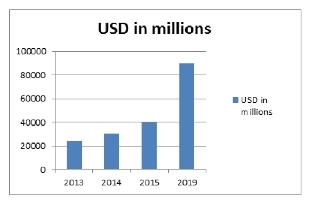
Figure 2: Growth forecast for nanotechnology
Materials Industry:
The worldwide market for carbon fiber came to $1.8 billion in 2014, and further the market is relied upon to develop at a five-year CAGR (2015 to 2020) of 11.4%, to reach $3.5 billion in 2020. Carbon fiber strengthened plastic market came to $17.3 billion in 2014, and further the market is relied upon to develop at a five-year CAGR (2015 to 2020) of 12.3%, to reach $34.2 billion in 2020. The opposition in the worldwide carbon fiber and carbon fiber strengthened plastic market is serious inside a couple of expansive players, for example, Toray Toho, Mitsubishi, Hexcel, Formosa, SGL carbon, Cytec, Aksa, Hyosung, Sabic.
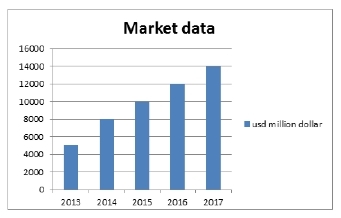
Figure 3: Growth forecast of materials
Materials Chemistry:
Today, many materials chemists are synthesizing functional device materials, and the discipline is often seen as directed towards producing materials with function—electrical, optical, or magnetic. Material chemistry is involved in the designing and processing of materials. Global market for catalysts is expected to reach $28.5 billion by 2020, growing at a CAGR (2015 to 2020) of over 3%. Asia-Pacific is having the largest market for catalysts accounting for more than 35% share.
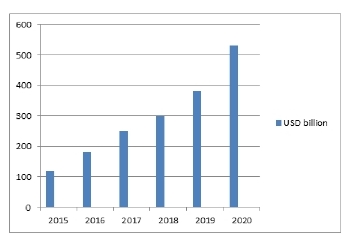
Figure 4: Growth forecast of material chemistry
Ceramic Matrix Composites and Carbon Matrix Composites:
- The global market for ceramic and carbon matrix composites will grow from $3.9 billion in 2016 to nearly $6.2 billion by 2021 with a compound annual growth rate (CAGR) of 9.4% for the period of 2016-2021.
- The aerospace and defence sector is the largest segment of the ceramic and carbon matrix composites market and will grow from nearly $2.3 billion in 2016 to nearly $3.5 billion by 2021, with a CAGR of 9.1%.
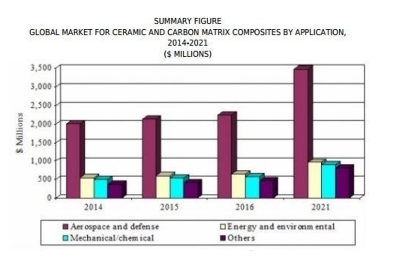
Advanced Materials for 3-D Printing:
- The global market for 3-D printing materials reached $475.4 million in 2015. This market is expected to reach $576.6 million in 2016 and over $1.5 billion in 2021, registering a compound annual growth (CAGR) of 21.5% over the next five years.
- Photopolymers, the largest segment of the global market for 3D printing materials, should reach $334.6 million in 2016 and $711.8 million by 2021, increasing at a CAGR of 16.3% through 2021.
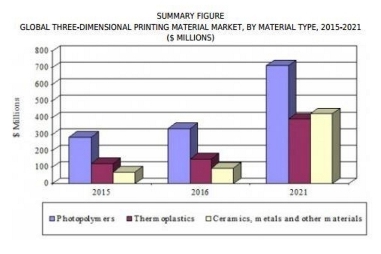
Automotive Aluminium Market:
- The automotive aluminium market is projected to grow from USD 47.91 Billion in 2016 to USD 111.80 Billion by 2026, at a CAGR of 8.8% from 2016 to 2026.
- Increased demand for lightweight and efficient materials from the automotive industry is fuelling the demand for automotive aluminium as it not only reduces weight of automobile components, but also of the complete body of auby 50%.

Extruded Plastics:
- The extruded plastics market is projected to grow from USD 184.34 Billion in 2016 to USD 291.74 Billion by 2026, at a CAGR of 4.7% between 2016 and 2026.
- The growing demand for extrudates from the construction industry is expected to drive the extruded plastics market. Increasing demand from Asia-Pacific region from end-use industries such as packaging is also expected to fuel the demand for extruded plastics.
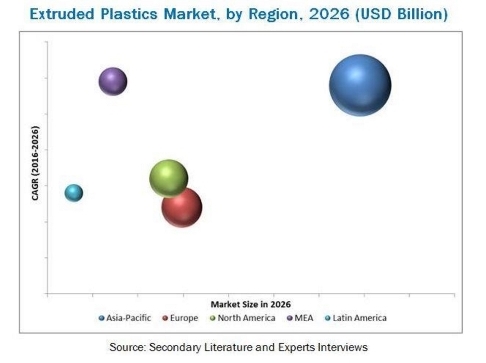
Graphene:
- BCC Research estimates the global graphene-based products market to be worth $1.5 million in 2015. The market should continue to grow from $310.4 million in 2020 to $2.1 billion by 2025, with a compound annual growth rate (CAGR) of 46.3%.
- Capacitors dominate the graphene market and are expected to grow from $50.0 million in 2020 to $625 million by 2025, a CAGR of 65.7% through 2025.
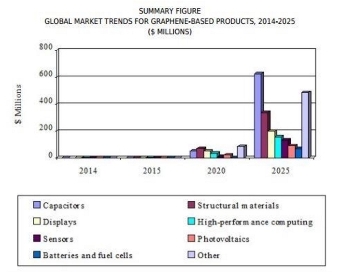
Nanocomposites, Nanoparticles, Nanoclays, & Nanotubes:
- The global nanocomposite market, in value terms, should reach $5.3 billion by 2021 from $1.6 billion in 2016 at a compound annual growth rate (CAGR) of 26.7%, from 2016 to 2021.
- The global market, in unit terms, should reach 733,220 metric tons by 2021 from 308,322 metric tons in 2016 at a CAGR of 18.9%, from 2016 to 2021.
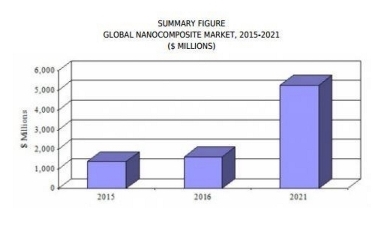
*Source: BCC Research, Transparency Market Research & Markets and Markets
Thanks for attending Advanced Materials 2017!
Another Materials Science Conference has been successfully completed - The 6th edition – and we must say Thanks to the attendees, Kansai International Airport Staff, and the Organizing Committee, Ad-Sponsors & Media partners and everyone else that helped to make this 13th International Conference and Exhibition on Advanced Materials and Nano Technology with the theme: Exploring the Possibilities in the Field of Advanced Materials and Nanotechnology a successful conference.
To Attendees,
We hope that you obtained the kind of advance technical information in the arena of Materials Science and Nanotechnology that you were seeking, and that your role in the field has been enhanced via your participation. We hope that you were able to take part in all the sessions and take advantage of the tremendous advancements in Materials Science and Engineering that scientists are working with.
If you have any feedback for us for future consideration or enhancements of this Conference, please provide your feedback to advancedmaterials@enggconferences.com
The meeting covered various sessions, in which the discussions included the scientific tracks:
- Advanced Materials and Functional Devices
- Engineering Materials
- Composite Materials
- Magnetism & Multiferroism
- Optical Materials and Plasmonics
- Energy and Harvesting Materials
- Nanotechnology-Basics to Applications
- Nano Materials
- Nano Structures
- Properties of Nano Materials
- Carbon Nanostructures and Graphen
- Spintronics
- Nanoparticle Synthesis and Applications
The Keynote presentations were given by:
- Abderrazzak Douhal, Universidad de Castilla-La Mancha, Spain
- Soon Hyung Hong, Korea Advanced Institute of Science and Technology, Republic of Korea
- Kenneth Reifsnider, University of Texas Arlington, USA
- Kui Liu, Chinese Academy of Sciences, China
- Shih-Chieh Hsu, Tamkang University, Taiwan
- Zhenhai Xia, University of North Texas, Denton, USA
- Bo Liedberg, Nangyang Technological University, Singapore
- Prasad KDV Yarlagadda, Queensland University of Technology, Australia
The Best Poster awards for this year:
- Prabhat Kumar Rai, Indian Institute of Technology Kanpur, India
- Zainab Jaf, Murdoch University, Australia
- Shatakshi Gupta, Indian Institute of Technology Roorkee, India
- Yoichi Takato, Okinawa Institute of Science and Technology Graduate University, Japan
- Insepov Zinetula Zeke, Tynyshtykbaev Nazarbayev University Research and Innovation System, Kazakhstan
Bookmark your dates: We hope to see you at Advance Materials Congress 2018 @Dubai, UAE, during August 27-29, 2018
Conference Highlights
- Advanced Bio-Materials & Bio-devices
- Advanced Ceramics and Composite Materials
- Advanced Optical and Magnetic Materials
- Optical Materials and Plasmonics
- Energy and Harvesting Materials
- Nanotechnology-Basics to Applications
- Nano Materials
- Nano Structures
- Physics and Chemistry of Materials
- Carbon Nanostructures and Graphene
- Spintronics
- Nanoparticle Synthesis and Applications
- Emerging Smart Materials
- Polymer Science and Engineering
- Advanced Materials Engineering
To share your views and research, please click here to register for the Conference.
To Collaborate Scientific Professionals around the World
| Conference Date | August 27-28, 2018 | ||
| Sponsors & Exhibitors |
|
||
| Speaker Opportunity Closed | |||
| Poster Opportunity Closed | Click Here to View | ||
Useful Links
Special Issues
All accepted abstracts will be published in respective Our International Journals.
- journal of Material Science and Engineering
- Journal of Nanosciences: Current Research
- Journal of Powder Metallurgy & Mining
Abstracts will be provided with Digital Object Identifier by








